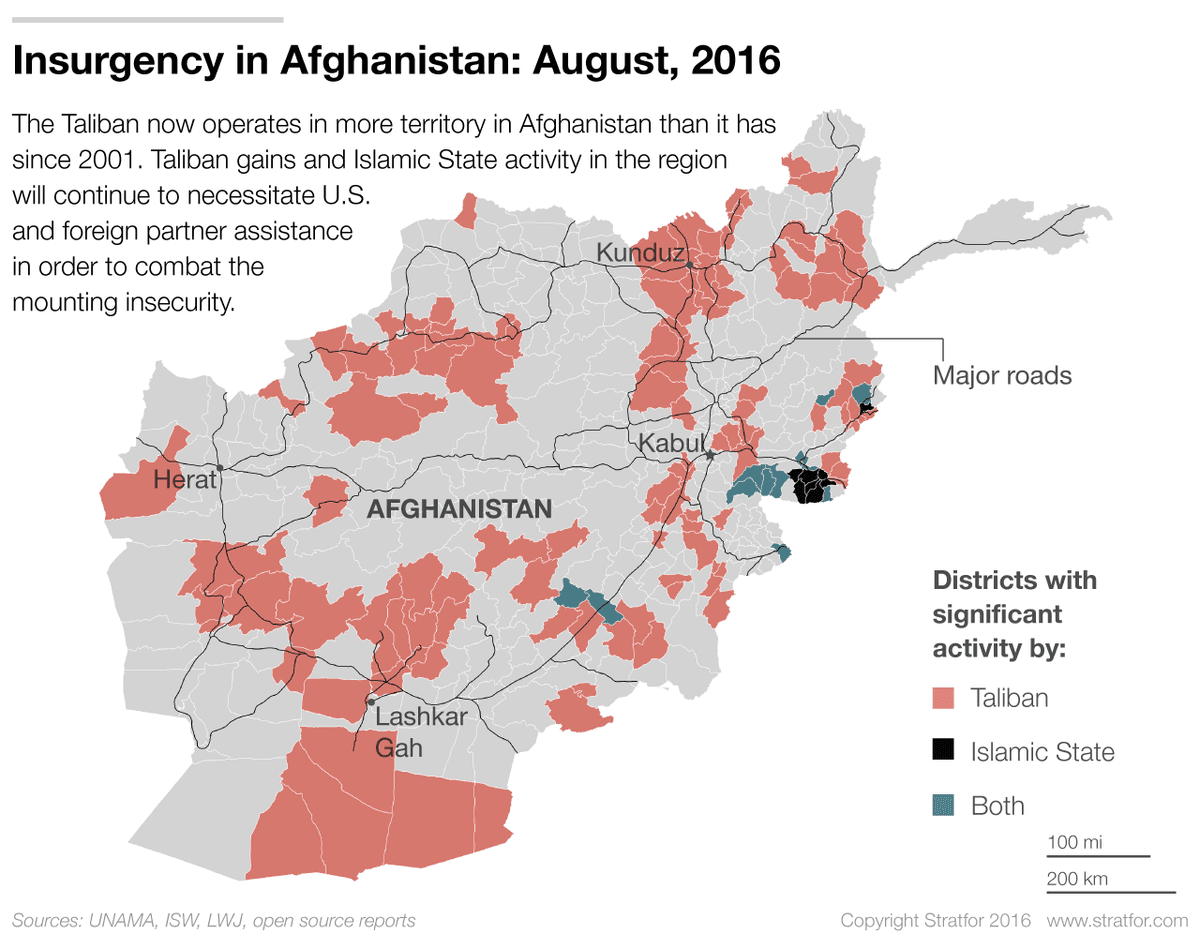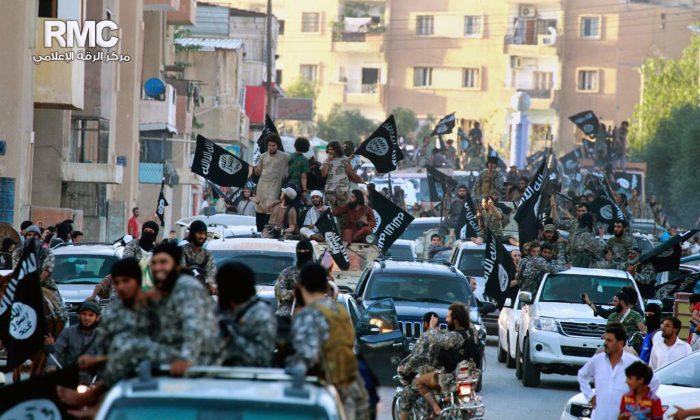Fifteen years after the Twin Towers were brought down by terrorist attacks on 9/11, the war in Afghanistan rages on.
Taliban and other insurgent groups have gained momentum against U.S.-backed Afghan security forces and pose a serious threat in 116 out of the country’s 384 districts, said Timor Sharan, senior Afghanistan analyst for International Crisis Group, citing official Afghan sources.
“This gives a clear indication of the growing insurgency that is seriously challenging the Afghan government in many different parts of the country,” he said.
The core challenge is political, rather than martial, say experts. The National Unity Government (NUG) of Afghanistan has been plagued by internal squabbling, making it less effective against the insurgency.
As a result, the security forces have lower morale, and much of the country is contested.

Regional Influence
As the U.S. and coalition forces have drawn down in Afghanistan, the void has been filled by Pakistan, India, and Iran, which have intervened to support proxies and increase their influence in the region.
Pakistan, a major player in the conflict, views post-2001 arrangements in Kabul as a threat to its security, said Sharan.
“Without the complicity of Pakistan’s security and intelligence services, the insurgency would not have reached its current size and capability,” he said.
Pakistan has historically supported militant groups to limit India’s influence in the region, while deepening its own, he said.
There are widespread reports that, since 2014, Iran and Russia have also cooperated with different factions of the Taliban as a way to keep the ISIS terrorist group out of their territory.
Meanwhile, the United States’ and NATO’s commitment to supporting the Afghan government adds another layer to the intensified regional rivalries.
US Role
The United States began its war in Afghanistan in October 2001 with the objective of destroying al-Qaeda and the Taliban government that harbored the terrorist group. The war has become the longest in U.S. history, and the Taliban remains a threat to the sovereignty of Afghanistan.
The U.S. military has suffered 2,384 fatalities in the war, though the yearly count has fallen dramatically, from a high of 499 in 2010 to six so far this year, according to iCasualties.org.
As the United States tries to withdraw from Afghanistan, the Obama administration has requested $44 billion for 2017 military operations there, which includes funding for combat and shoring up the Afghan army’s fight against the Taliban and other extremist groups.
While U.S. and NATO forces have largely left Afghanistan, any hopes for a complete withdrawal have proven to be false.
“Fifteen years of conflict has shown there are limits to U.S. ambitions in stabilizing Afghanistan,” said Faisel Pervaiz, a South Asia analyst for Stratfor.
“What Washington wants is for Afghans to own this war. Washington wants to leave, but leave feeling confident that the Afghan National Army is a cohesive unit to manage the threat of the Taliban,” Pervaiz said.
President Barack Obama called the conflict “precarious” and in July announced that he will keep 8,400 U.S. troops in Afghanistan for the remainder of his term. There are currently 9,800 troops in the country, according to a Defense Department report.
“As president and commander in chief, I have made it clear that I will not allow Afghanistan to be used as [a] safe haven for terrorists to attack our nation again,” Obama said.
This year, insurgents successfully besieged Lashkar Gah, the capital of Helmand Province. In response, American troops were sent in to reinforce the Afghan army. The province has been the deadliest combat zone over the course of the war and the Taliban hold sway over much of the area.
Even in the national capital of Kabul, security is porous. In August, an American and an Australian professor from the American University of Afghanistan were kidnapped.
“The kidnapping reflects that increase in insecurity around the country, especially in Kabul city, and the failure of the government to protect its population,” Sharan said.
Afghan Politics
The chaotic state of the government in Kabul is a fundamental problem. The disputed 2014 election was settled through a power-sharing agreement whereby Ashraf Ghani became president and his opponent, Abdullah Abdullah, became chief executive officer.
The political marriage has resulted in a fractured National Unity Government that has left fissures in the armed forces. These fissures render the military divided and less effective against threats like the Taliban and other insurgent groups, including ISIS.
For Afghanistan to defeat its enemies and secure its borders, it will need political consensus among the country’s leadership.
“That is a key prerequisite for the Afghan government to present a formidable and adequate security response to the Taliban,” said Pervaiz.
Continued NATO Support
Political consensus won’t happen overnight, however, and NATO recognized the long-term demands in Afghanistan at the Warsaw Summit in July by reaffirming its commitment to Afghanistan until the end of 2020.
NATO will continue to provide training, advice, and funding of $1 billion each year to the Afghan security forces.
But NATO assistance is subject to reforms including curbing corruption, promoting transparency and accountability, and fostering economic development.
“These conditions are most likely to frustrate the NATO allies in the coming years as the NUG has failed to bring to justice corrupt officials and groups, and internal rivalry and distrust between the two executives and their allies will make reform implementation very difficult,” Sharan said.
Experts generally agree that with political stability being the foundation of an effective military force, it will be politics rather than force that is likely to decide the battle against the insurgency.




